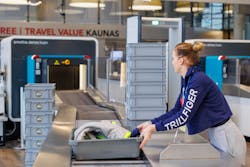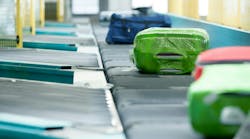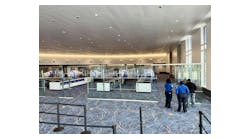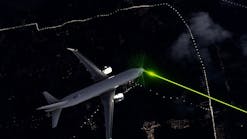Innovations at Kaunas Airport: Security Scanners for Hand Luggage
Aviation security screening at Kaunas airport has become faster and more convenient for passengers, as three modern three-dimensional computer tomography-based aviation security scanners have been enabled at full capacity. During the check-in procedure, passengers no longer need to remove any electronic devices and liquids from hand luggage - new devices analyze the contents of the luggage in a three-dimensional space.
Electronics and liquids will remain in luggage.
The first passengers were screened with the new equipment in Kaunas last November when the testing phase took place, and the system was put into full use in February of this year, after all tuning work was completed.
"New technology solutions at Lithuanian airports first of all ensure a higher level of aviation security, but at the same time improve passenger experience. Passengers no longer need to take liquids and electronic devices out of their bags, suitcases or backpacks - everything can stay inside the luggage. As a result, the screening process becomes more efficient, faster and of higher quality. In addition, certified devices are capable of automatically identifying even particles of explosive materials when checking all baggage," says Vidas Ksanas, Head of the Safety and Security Department of Lithuanian Airports.
He adds that next year, seven of the same scanners will start operating in the new departure terminal at Vilnius Airport, which will be the most modern in the Baltic States.
Lithuanian Airports purchased the new generation aviation security scanners during an international public procurement. Polish company Dimark S.A. won the procurement. The value of the entire project is 5.8 million. euros (without VAT). Devices of the well-known German manufacturer Smiths Detection are being installed in Lithuanian airports.
The requirement for the volume of liquids in luggage is not changing.
According to V. Ksanas, the innovations also facilitate the work of security screening inspectors, as they can rotate the 3D image generated by the scanners on their screen at various angles and easily identify items placed in hand luggage. Even liquids do not need to be removed, it is just important that they are properly packed, in accordance with the requirements up to now: liquids carried in hand luggage must be in containers with a capacity of no more than 100 ml, and the total volume of liquids per passenger cannot exceed 1 liter (1000 ml).
The head of the Safety and Security Department of Lithuanian Airports points out that for the time being, airports in Europe and the world apply different practices regarding the transportation of liquids in hand luggage. However, the expert hopes that the broad international discussion of airports will turn into common decisions and uniform rules for the entire aviation sector, which will allow the current order to be changed and the advantages of modern security technologies to be fully exploited.
"For the time being, not all European airports have such a high level of screening systems with the latest generation of scanners or have them at all, however they still apply the currently relevant liquid volume requirements," explains V. Ksanas.
Lithuanian Airports takes the position of not changing the rules as long as this new generation of scanner technology becomes more widely used in other European airports and there is less risk for passengers to experience inconvenience due to differences in technological screening options and requirements at different airports.
The current rules for screening passengers and their hand luggage in the European Union came into force in 2006, when the EU decided to take stricter measures to protect passengers from the threat of liquid explosives. Then the procedure for packing liquids was introduced, when only small amounts of liquids are allowed in hand luggage.





